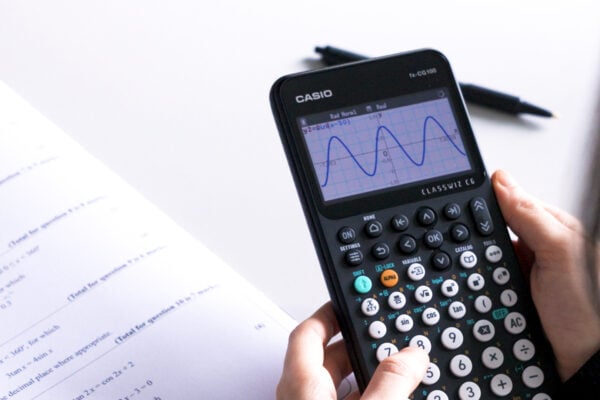When to use calculators in numerical methods | A-level maths

Numerical methods play a crucial role in A-level maths, especially when traditional algebraic techniques aren’t a viable way to reach the answer.
When equations can’t be solved easily by rearranging or factorising, numerical approaches can offer accurate approximations. But there’s more to these techniques than just plugging numbers into a calculator.
In this blog, we explore:
- What numerical methods involve and how they link to functions
- Why manual processes matter
- How calculators can support your learning
- Tips for balancing tech and manual methods in exam scenarios
- Why mastering both approaches pays off in the real world
Understanding numerical methods in A-level maths
Numerical methods are techniques used to find approximate solutions to equations that can’t be solved easily by standard algebraic methods. Instead of working out an exact answer, you use logical steps to get as close as possible to the root of an equation.
These methods are closely tied to understanding functions – especially how they behave graphically. In A-level maths, numerical methods can help you develop problem-solving skills, deepen your understanding of functions and prepare for exam questions where exact algebraic solutions aren’t practical.
Why manual application is important
An advanced scientific or graphic calculator is a crucial and highly useful tool for studying A-level maths, but it’s also important to know how numerical methods can be applied manually. This can help to develop mathematical intuition and problem-solving abilities.
Practising methods by hand also reinforces core concepts and could boost your confidence when facing unfamiliar challenges.
Some key numerical methods that you can apply manually include:
- Change of sign: Checking where a function switches from positive to negative to locate a root.
- Interval bisection: Narrowing down the solution by halving intervals repeatedly.
- Iteration: Applying a rule step-by-step to get closer to the solution.
- Newton-Raphson method: Using tangents to approximate a root efficiently.
These techniques can help you visualise what’s happening behind the numbers. Working through the process without relying solely on a calculator may help you develop stronger reasoning and greater flexibility, both of which are vital for tackling the toughest A-level maths problems.
Smart use of calculators and technology
Technology is a key asset when studying numerical methods, especially when used smartly alongside manual techniques. A Casio graphic calculator, for instance, allows you to visualise functions, check your steps and avoid mistakes in repetitive calculations.
With a device like the recently launched fx-CG100 or its predecessor the fx-CG50, you can:
- Graph functions to spot where they cross the x-axis
- Zoom in on roots to find more accurate values
- Perform iterations quickly without losing track of steps
- Use tables to track function values and sign changes
These tools are especially helpful during revision and when checking your work in exams. Rather than doing every step by hand each time, calculators can confirm when you’re on the right track. Used effectively, they support learning and help you gain confidence in both your method and answer.
Striking the right balance in exams
In A-level maths exams, knowing how to balance manual methods with calculator use can make a big difference. You need to demonstrate understanding as well as accuracy, so showing your working is just as important as getting the right answer.
Manual techniques help you explain your logic and earn method marks, while calculators can speed up repetitive steps and reduce simple errors.
For example, you might use interval bisection manually to set up a problem, then check your solution using your calculator’s graphing tools. This kind of approach shows both understanding and efficiency, helping you to make the most of your time and gain as many marks as possible.
Real-life applications: why manual and tech skills matter
Mastering both manual and calculator-based numerical methods isn’t just useful for exams – it’s also good preparation for life after A-level maths. In university STEM courses and technical careers, you’ll need to apply logic, adapt to new challenges and use digital tools confidently.
Manual methods help to build resilience and analytical thinking, enabling you to understand problems from first principles. Using technology, meanwhile, develops efficiency and precision, which are required when working with real-world data and software.
Developing both skill sets now will mean you’re better equipped for future study and careers where maths, reasoning and tech all come together.
If you’re interested in exploring numerical methods further, take a look at this post on the Casio Education blog or this video on the Bicen Maths YouTube channel.



